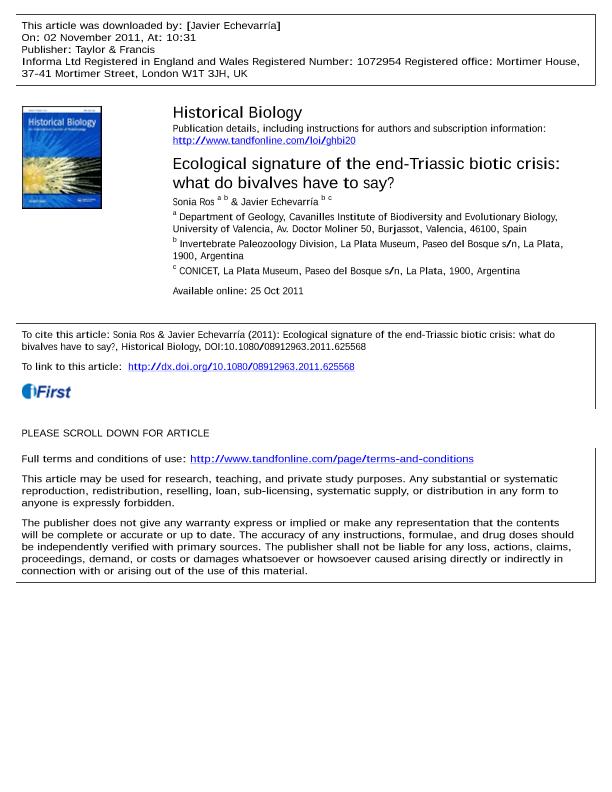Artículo
Ecological signature of the end-Triassic biotic crisis: What do bivalves have to say?
Fecha de publicación:
10/2012
Editorial:
Taylor & Francis
Revista:
Historical Biology
ISSN:
1029-2381
Idioma:
Inglés
Tipo de recurso:
Artículo publicado
Clasificación temática:
Resumen
In order to understand the causes underlying the Triassic-Jurassic (T/J) mass extinction, we tested different bivalve features for extinction selectivity, i.e. shell mineralogy, age at the Rhaetian and three main autoecologic traits (feeding mechanism, tiering and motility/attachment). Also, diversity and turnover rates throughout the Triassic and the Early Jurassic were analysed in detail. The dataset employed for this analysis was a precise database at genus level including data from Induan to Sinemurian times. Results point to a true mass extinction for bivalves around the T/J boundary. This extinction was not age-selective at the boundary. Certain analyses suggested that shell mineralogy was a character significantly increasing survival odds, but this relationship seems to reflect selectivity on autoecologic traits. There was no difference in extinction proportions between both feeding types (i.e. deposit feeders and filter feeders); among the other traits, deep burrowers, epifaunal-motile and endobyssate forms seem to have been favoured, while shallow burrowers (and probably reclined forms) were more heavily affected. This pattern suggests an environmental stress at the boundary with some particular issues affecting the different life modes. Models linking magmatism in the Central Atlantic Magmatic Province with the end-Triassic mass extinction are a plausible scenario for this kind of perturbation.
Palabras clave:
AUTOECOLOGY
,
BIVALVIA
,
CAMP
,
END-TRIASSIC EXTINCTION
,
SELECTIVITY
,
SHELL-MINERALOGY
Archivos asociados
Licencia
Identificadores
Colecciones
Articulos(CCT - LA PLATA)
Articulos de CTRO.CIENTIFICO TECNOL.CONICET - LA PLATA
Articulos de CTRO.CIENTIFICO TECNOL.CONICET - LA PLATA
Citación
Ros, Sonia; Echevarría, Javier; Ecological signature of the end-Triassic biotic crisis: What do bivalves have to say?; Taylor & Francis; Historical Biology; 24; 5; 10-2012; 489-503
Compartir
Altmétricas




